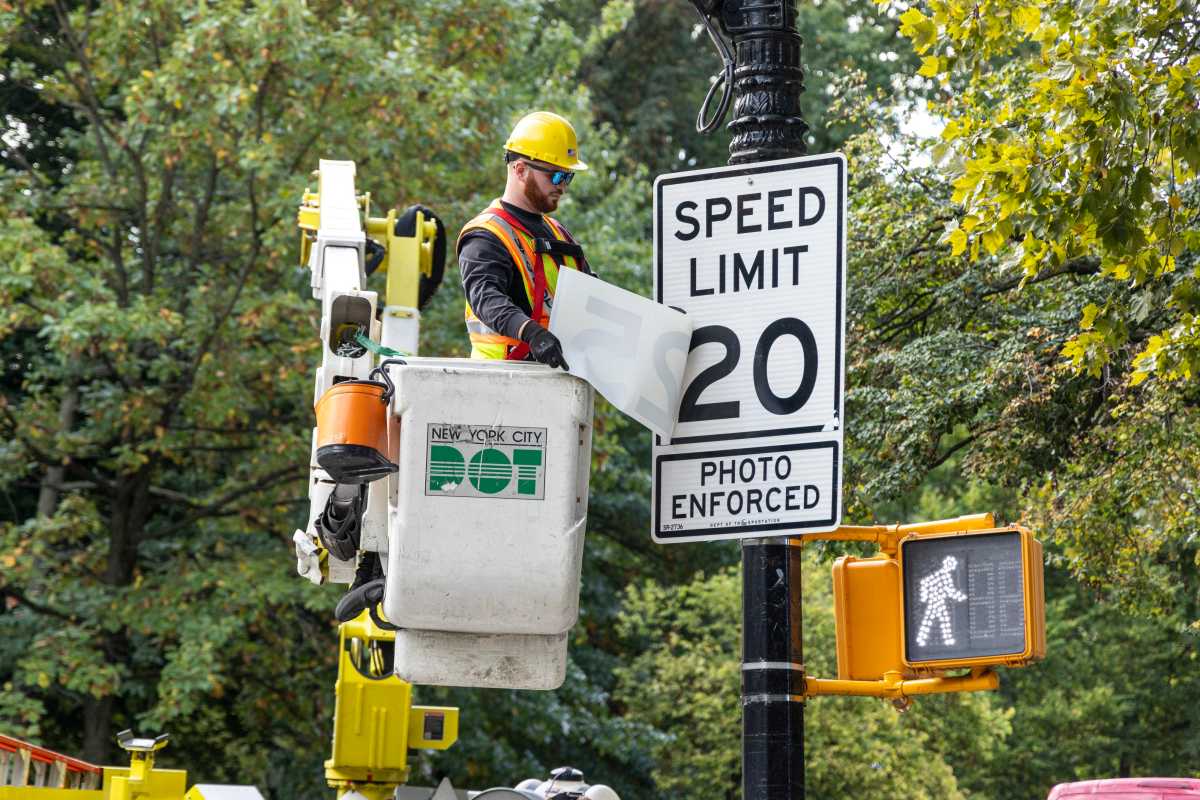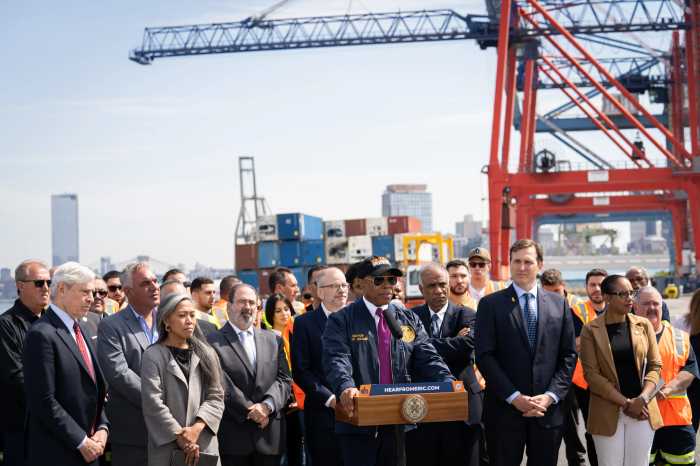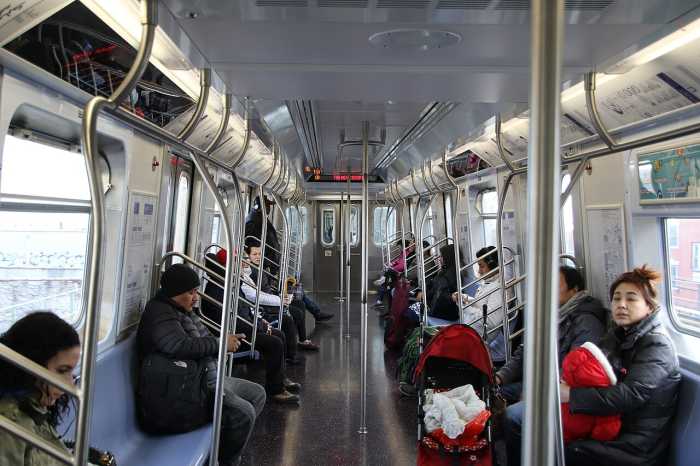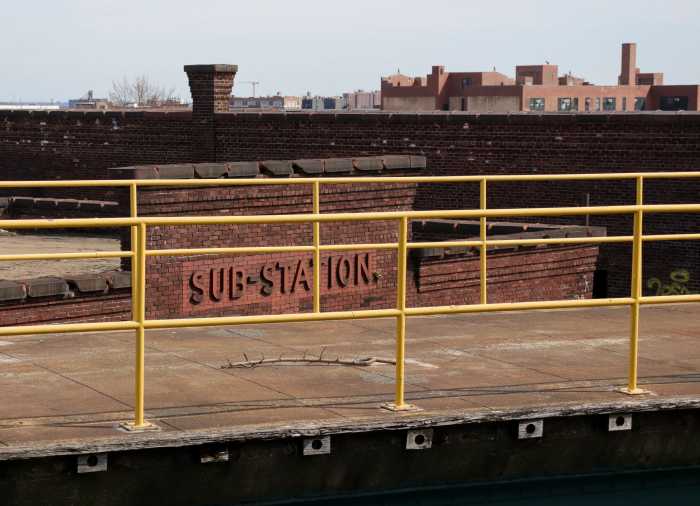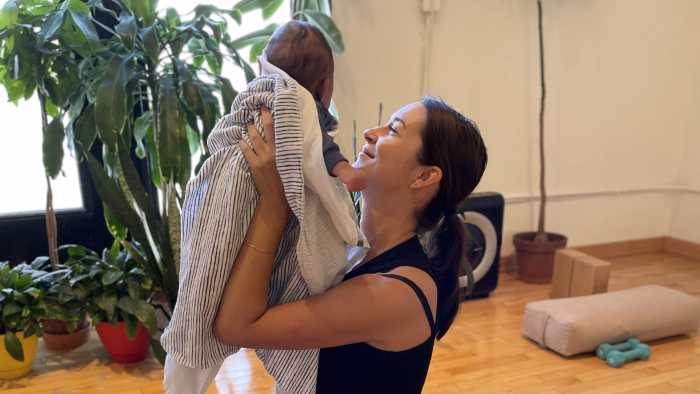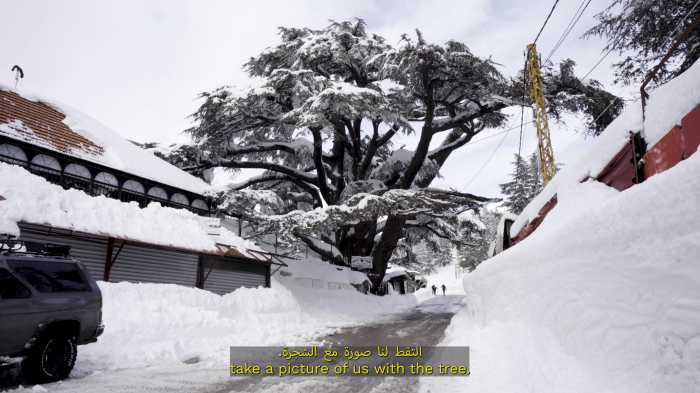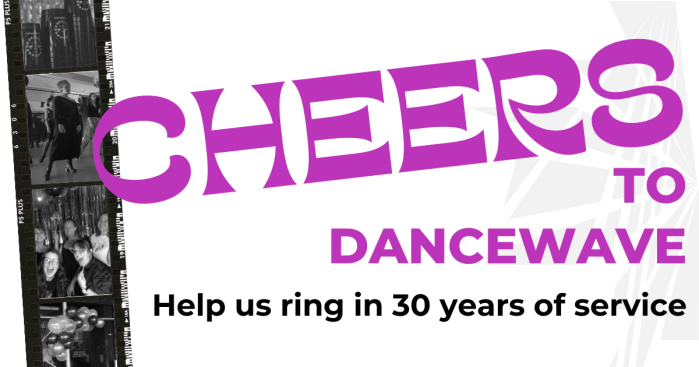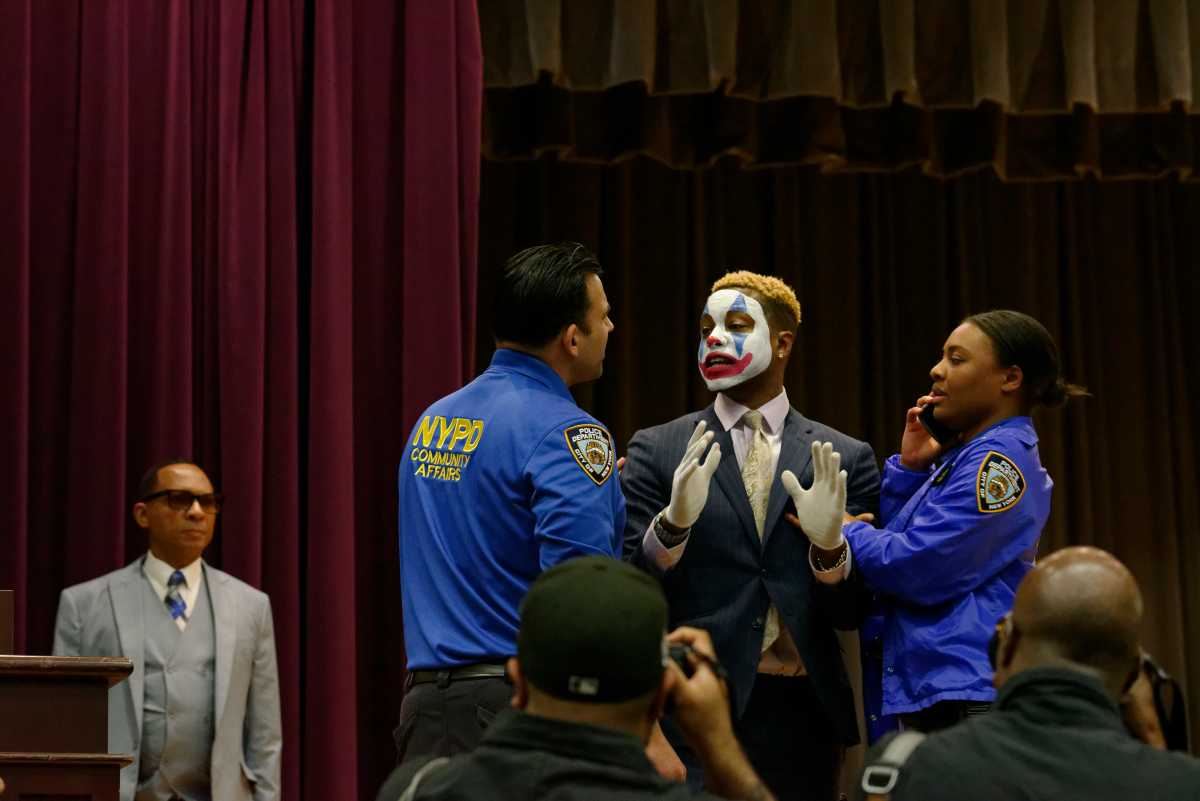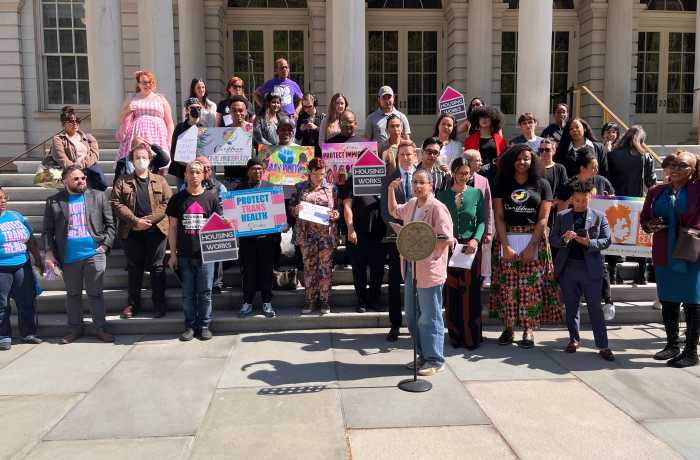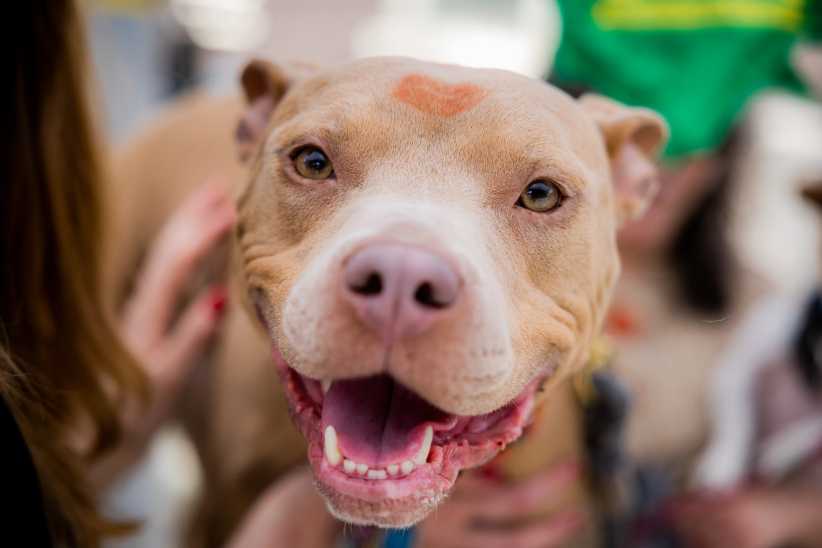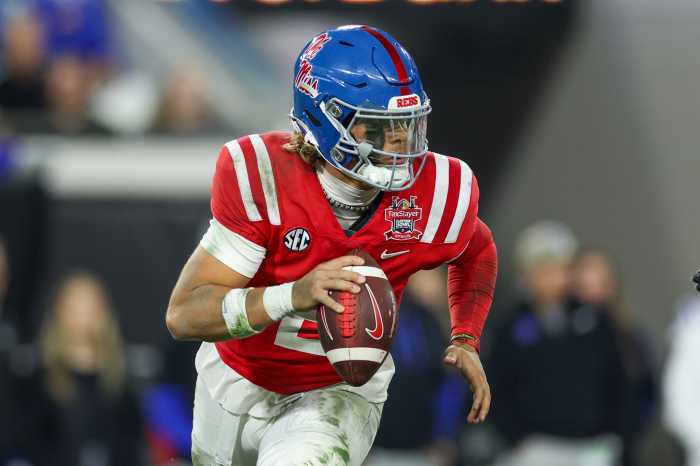The speed limit in a 0.18 square mile slice of Dumbo will drop to 20 mph as the nabe becomes Brooklyn’s first “Regional Slow Zone,” city officials announced Wednesday.
The slowdown — a result of the passage of Sammy’s Law last year — is meant to increase traffic safety and decrease the severity of crashes, especially for pedestrians. In the last five years, the small Dumbo slow zone has seen 10 severe crash-related injuries and one death, according to the Department of Transportation.
Dumbo’s zone will stretch from east-west from Furman Street to Navy and Hudson Streets and north-south from roughly John Street to Sands Street and the Brooklyn-Queens Expressway — though the speed limit on the BQE itself will not be impacted.
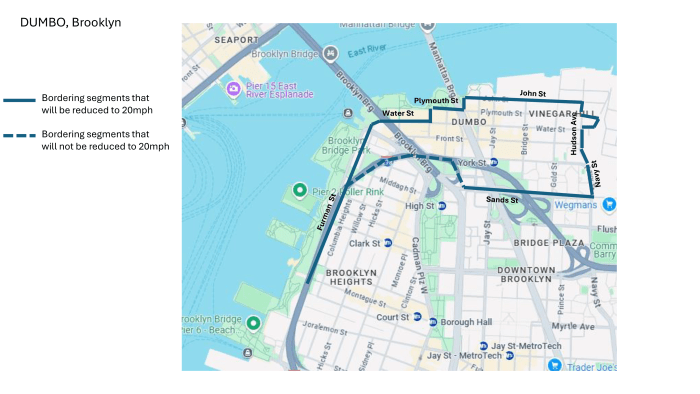
Queens, the Bronx, and Staten Island will also get one slow zone each. All four — plus one already in effect in lower Manhattan — were placed in areas with high pedestrian concentrations and clear geographic boundaries, per DOT.
“Data has shown that a one mile per hour increase in speed results in a nearly three percent increase in mortality,” said Council Member Lincoln Restler, in a statement. “I’m pleased that DOT will be implementing Brooklyn’s first Regional Slow Zone in DUMBO — a neighborhood densely crowded with pedestrian foot traffic.”
The new speed limit will not be in effect immediately. This spring, DOT will officially notify local community boards of the change – in Dumbo, that’s Brooklyn Community Board 2 — and there will be a two-month public comment period before the slow zone is officially implemented.
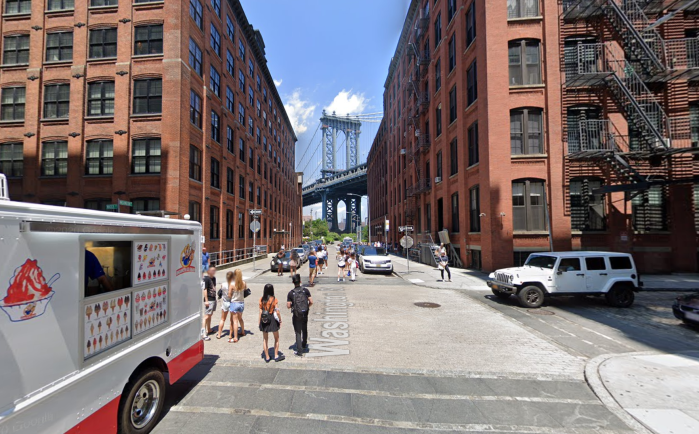
A 2011 report from the AAA Foundation for Traffic Safety found that pedestrians are more than twice as likely to be severely injured by a car traveling 23 mph than 16 mph. According to the U.S. Department of Transportation, pedestrians have a 90% chance of surviving being hit by a vehicle traveling at 20 mph or below — but just a 50% chance of surviving being hit at 30 mph.
“Lowering vehicle speed limits by even a few miles per hour could be the difference between life or death in a traffic crash,” said DOT commissioner Ydanis Rodriguez, in a statement. “Our newest Regional Slow Zones will save lives and protect our most vulnerable New Yorkers in some of our busiest pedestrian communities.”
Slowing down for Sammy’s Law
The city implemented its first slow zone last fall, immediately after Sammy’s Law — which allowed the city to alter its own speed limits — took effect.
Under Sammy’s Law, the city also lowered speed limits on various local streets, including Prospect Park West, where 12-year-old Sammy Cohen Eckstein — for whom the law was named — was hit and killed by a driver in 2013.
By the end of 2025, DOT plans to implement the 20 mph speed limit in more than 250 locations, especially in school zones and on shared streets, the department said.
For now, the department does not have designs for additional borough Slow Zones, a DOT spokesperson told Brooklyn Paper.
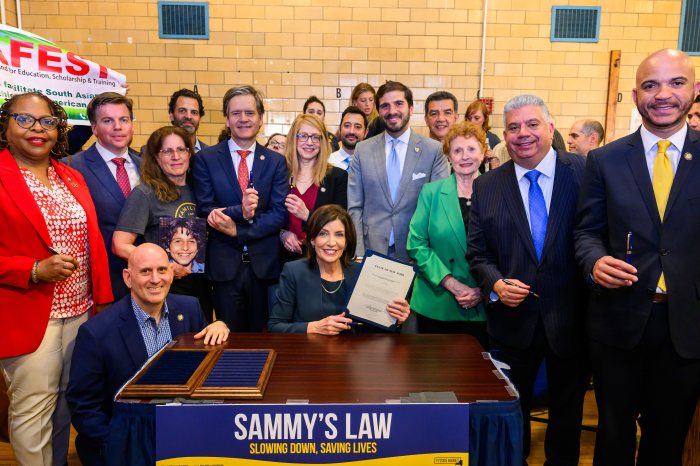
But some in Brooklyn are already hoping for additional zones. In a statement, Restler said he “[hopes] this step advances realization of Sammy’s Law and a citywide 20 mph speed limit.”
In February, Brooklyn Community Board 1 sent a letter to DOT asking that all of CB1 — which encompasses Williamsburg and Greenpoint — be made a Regional Slow Zone.
A separate March 5 letter to DOT, signed by Brooklyn Borough President Antonio Reynoso and dozens of local organizations, said CB1 has “the fifth most traffic fatalities and injuries in the borough of Brooklyn,” with thousands of crashes and 31 deaths in the last five years.
In a statement Wednesday, Reynoso celebrated Sammy’s Law, and said he was “grateful” that DOT implemented the policy in Dumbo.
“While we celebrate this slow zone in DUMBO, we must continue to expand slow zones across this city and prioritize neighborhoods where crash rates are highest, such as North Brooklyn,” he said.


